Hiking Foot Care: How to Prevent Foot Pain Before You Hit the Trail
Disclaimer: Explore the Map contains affiliates links and is a member of the Amazon Services LLC Associate Program and other affiliate programs. If you make a purchase using one of these affiliate links, I may recieve a compenstation at no extra cost to you. Read my disclaimer for more information.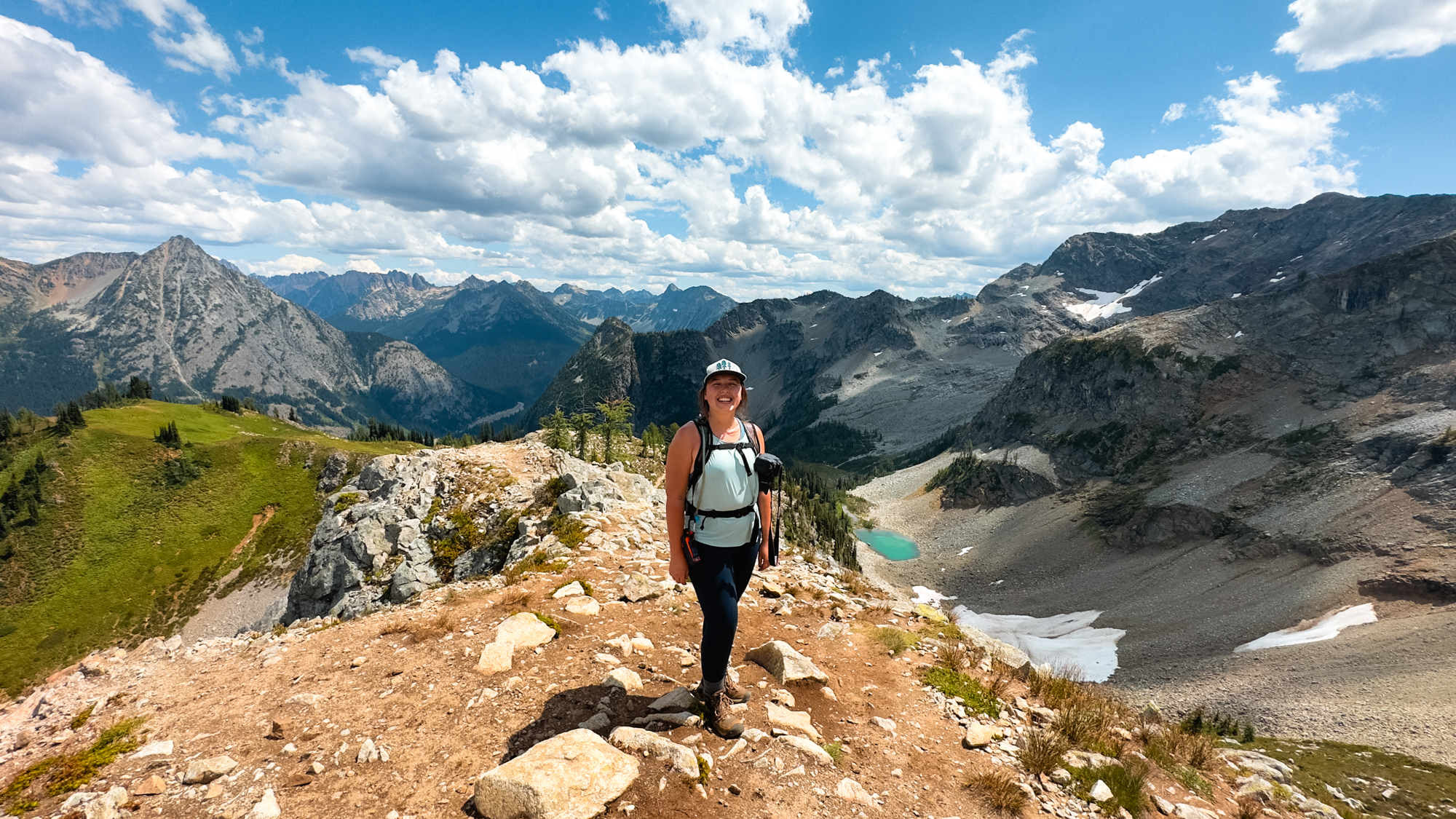
What’s better than knowing how to deal with foot pain on the trail? Not having it in the first place. While there’s no 100% fail-safe way to make sure you never have foot problems while hiking, preventative care will make a world of difference.
After all, your feet are literally your only mode of transportation while hiking so it’s important to keep them in tip-top shape. Those bad boys are essential and I don’t subscribe to the “badge of honour” that comes with beating your feet to shit while hiking. No, thank you.
We’re going to talk the important roles of properly fitted shoes, specialized gear such as orthopedics and braces, foot preparation, and more.
Happy, cared for feet will lead to fewer blisters, twisted ankles, and other common hiking injuries which in turn means more time out hiking and exploring!
Disclosure: I may earn a commission on shoppable links in this article.

Properly Fitted Hiking Shoes
Did you know that there’s a lot more to a properly fitted shoe than shoe size? Shoes are like bras — most of us are wearing the wrong size.
Yup, you read that right. Your foot width, length, and volume are all super important and can vary foot to foot. No wonder finding the right shoe can be such a challenge. What one person swears by might cause you immense pain because our feet are, literally, all different.
Whether you’re looking for hiking boots, trail runners, sandals, or something in between, having properly fitted shoes will make all the difference on your hikes.
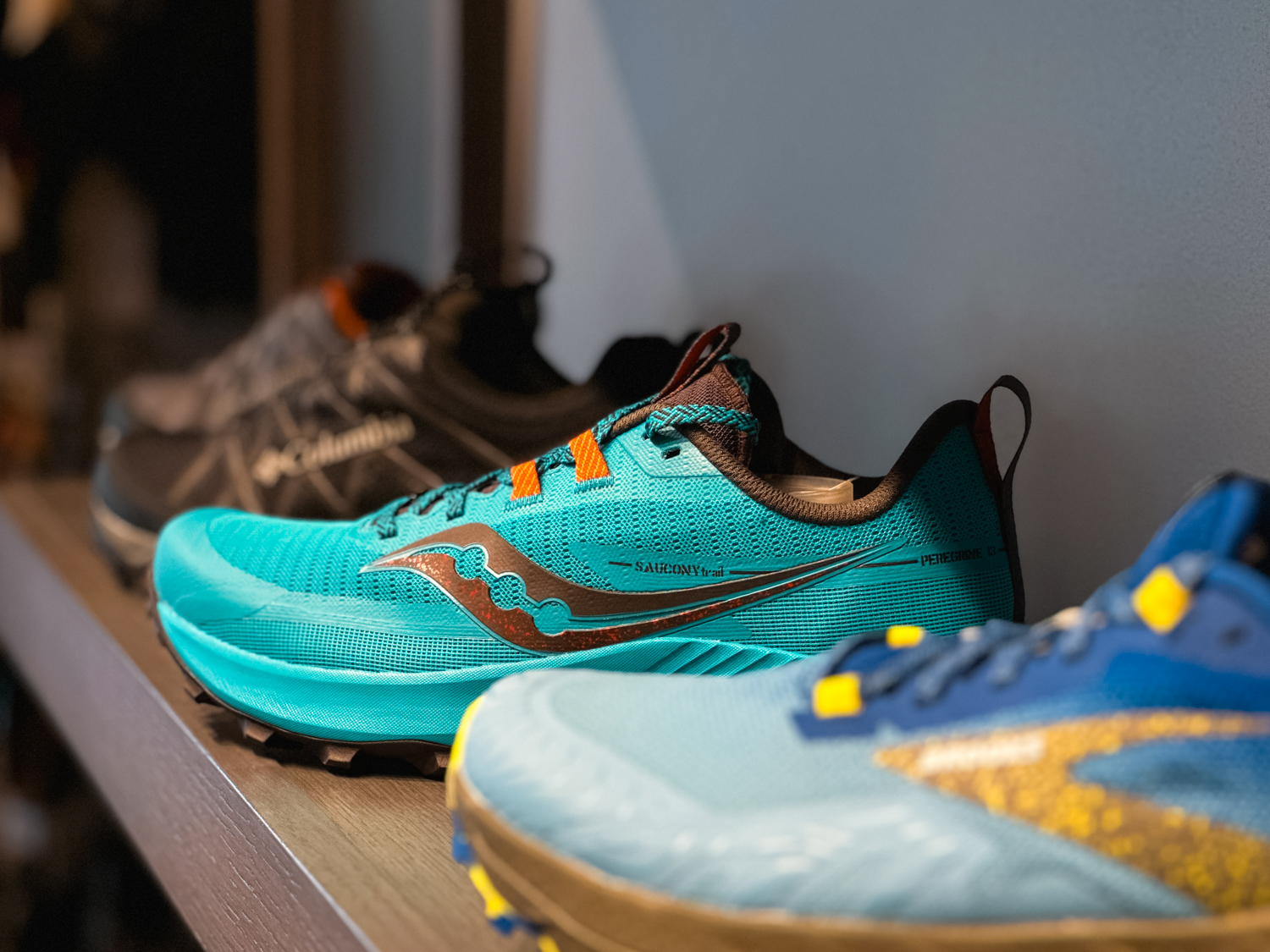
How to Buy Hiking Shoes That Fit
If you’re thinking, “But Sam, how do I find all that info about my feet? It’s not like I can just walk into a shoe store and they pull out a magic shoe sizer.”
Well, actually, some can.
Kintec, a Canadian orthotics and footwear company, has 3D foot imaging that not only tells you all kinds of stats about your feet, it also recommends shoes based on your specific foot measurements!
It’ll even point out potential problem areas. Okay, it might not actually be magic, but it’s pretty damn cool.
Did I mention that it’s free?
Yup, just visit one of Kintec’s locations in BC or Ontario (I’m partial to the Vernon location) and you’ll learn exactly what to look for in your hiking shoes to keep your feet happy on the trails.
Kintec can also help you pick out your new shoes. Not only do they have Canadian Certified Pedorthists in-store, they also have a store full of footwear you’ll actually want to wear such as Hoka, Nike, Brooks, Columbia, and Birkenstock.
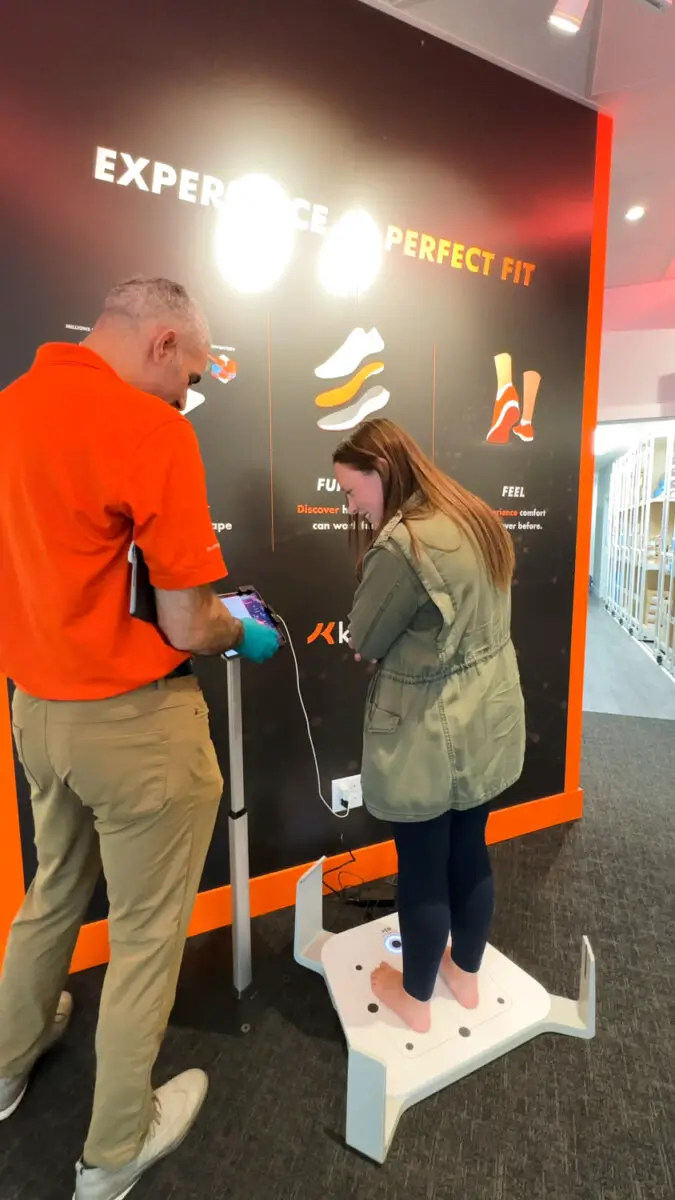
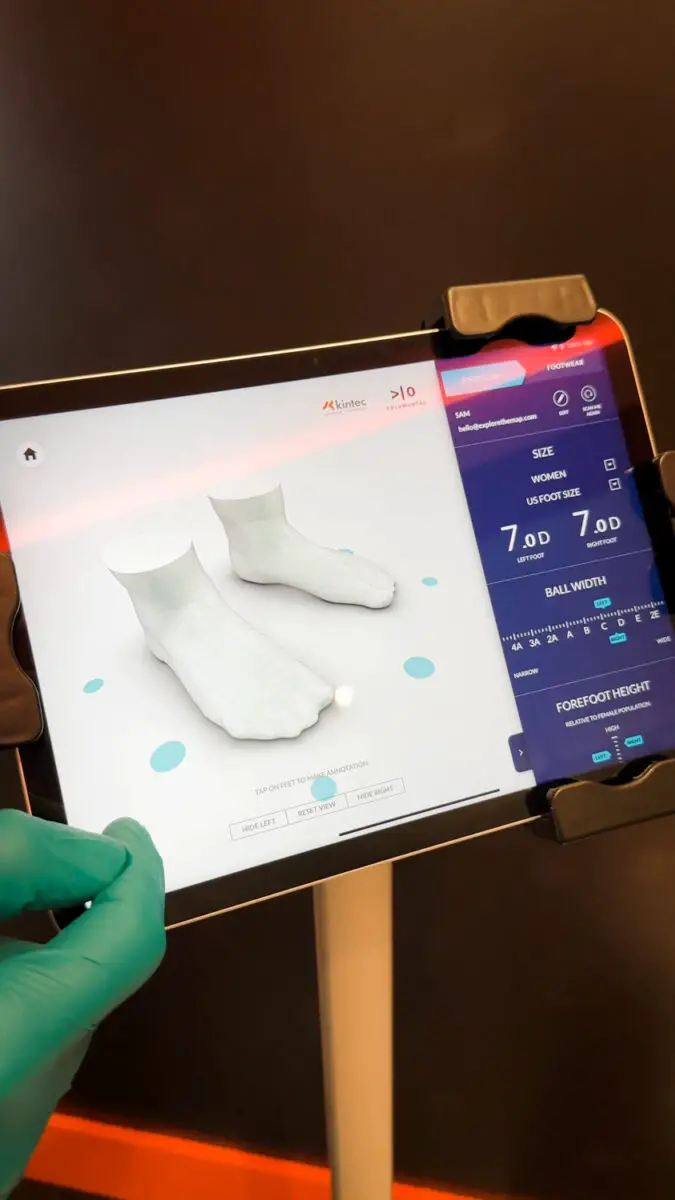
Foot Width & Shoe Sizing
When selecting your hiking shoes, Kintec can help you choose the right size. They’ll help you compensate properly for things like swelling and cushioned hiking socks.
Most people will size up a half-size to account for this, but it never hurts to get a free assessment to see if that will help you. It might end up being you need a different width of shoe, not necessarily size. Or maybe you need more room on the top of your foot.
When I went for a foot assessment at Kintec, I learned that I have wide feet. I always thought I wore the right size, but when I tried a wide shoe I realized how much more comfortable it was! I often get blisters on my toes and the extra space will help reduce this.
Fun fact: Your foot can change width and shape throughout your life. What fit two years ago might be totally different today. You’re not wrong for thinking your boots don’t fit anymore — they actually might not.
How Should My Shoe Fit?
Although shoe sizing is quite individualized, here are some things to look out for:
- Thumb width of space between the front of your shoes and toes.
- The sides of your shoes should not be bulging or tight.
- No (or very limited) pain points throughout the top of your foot.

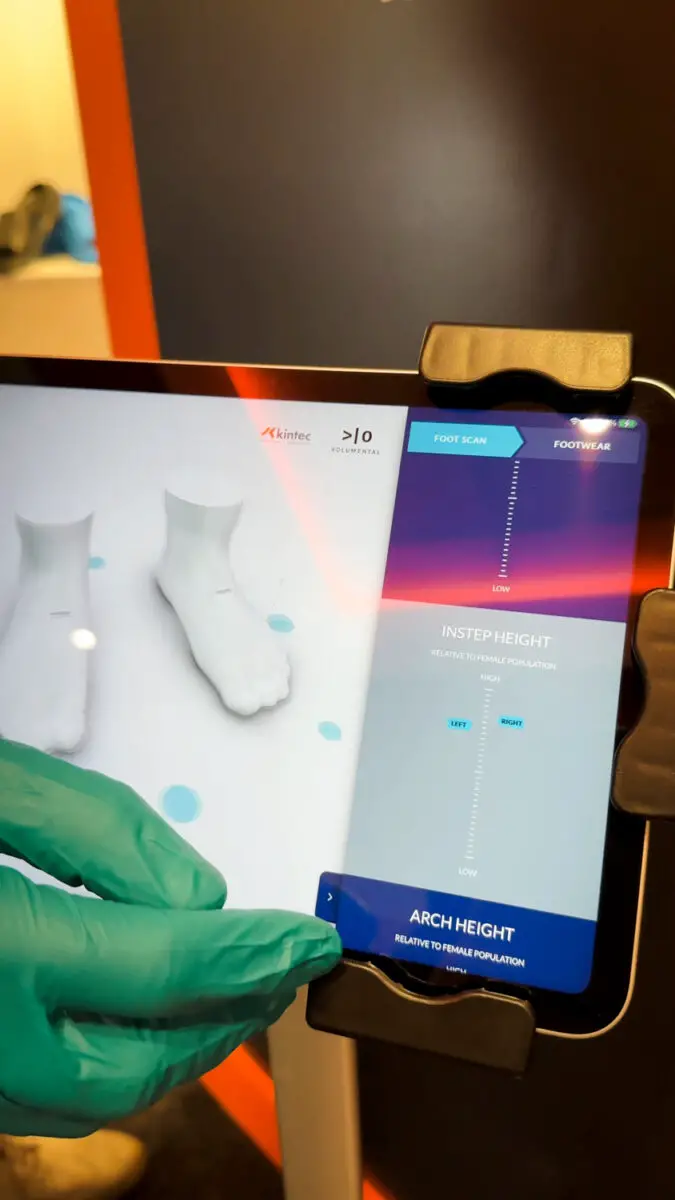
Specialized Gear That Can Help Prevent Foot Pain While Hiking
Now that you actually know your foot size and have found shoes that fit properly, here’s some gear that can further reduce hiking pain.
Custom Orthotics
Orthotics are shoes inserts that are customized for you and act as shock absorbers for your feet. They can be moved from shoe to shoe, greatly increasing their usability.
Orthotics help distribute your weight evenly which removes pressure and stress from painful areas of your foot or ankle. While hiking, orthotics can help improve your stability, reduce rolled ankles, and alleviate foot and leg pain.
They’re especially helpful if:
- You hike long distances
- You regularly experience sore feet, ankles, or knees during or after hikes
- You have high or low arches
Custom orthotics can be a little pricy, but most insurance will cover it (or greatly reduce the cost). If you can swing it, orthotics can be a great addition to your hiking gear.
If you’re looking for custom orthotics for you hiking shoes, book an in-person or online assessment with Kintec. I recently visited the new Vernon location and had a wonderful experience.
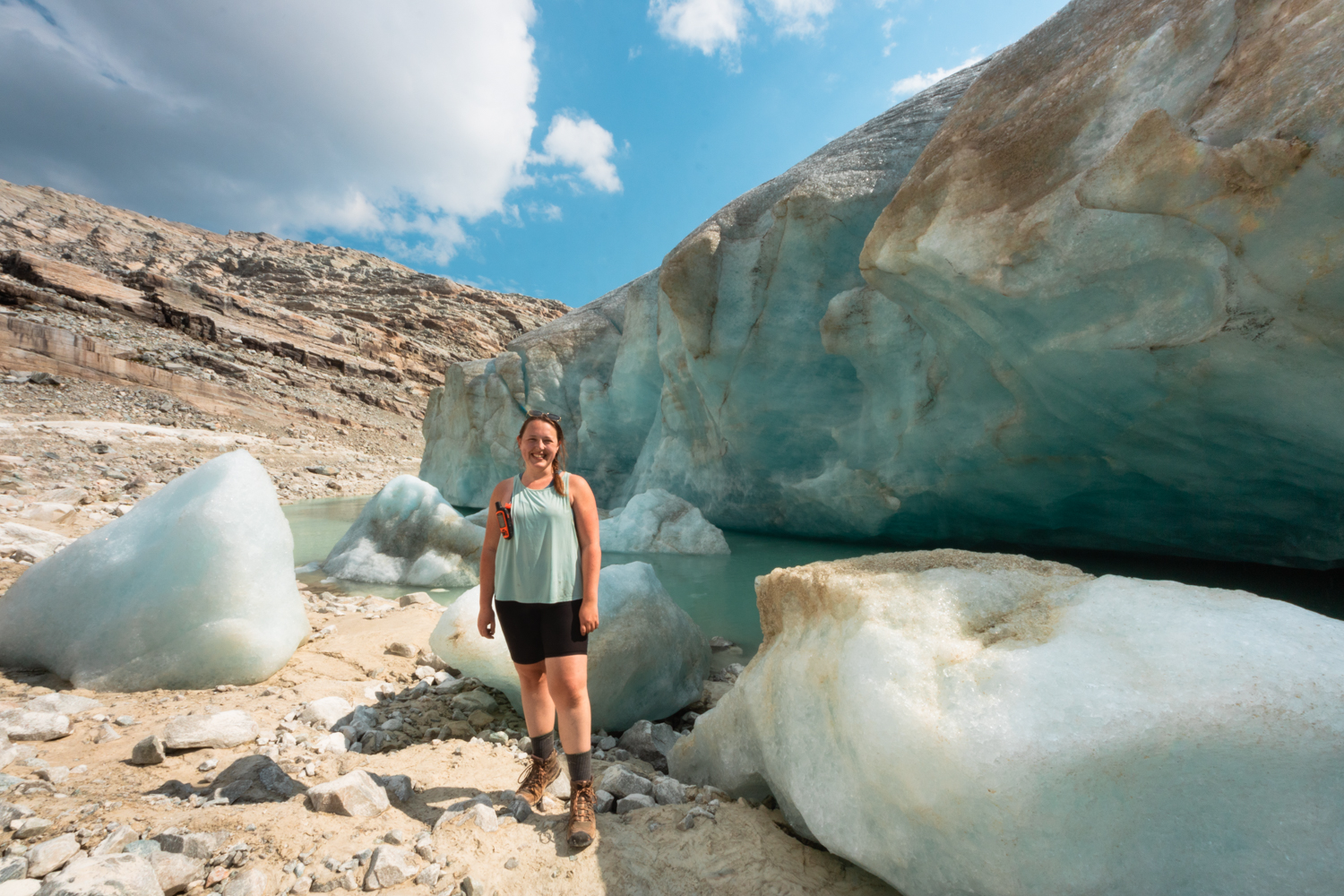
Compression Socks
Compression socks help prevent leg pain and tiredness while hiking, as well as reduce recovery time post-hike. They improve circulation, prevent lactic acid build-up, and shorten muscle recovery time.
You can wear compression socks during your hike or afterwards. Generally, you’ll start to feel the effects of a hike about 8 hours afterwards without compression socks, so they can be a great addition to your gear to keep your legs and feet feeling in good shape.
Kintec can help you choose the best compression socks for your needs.
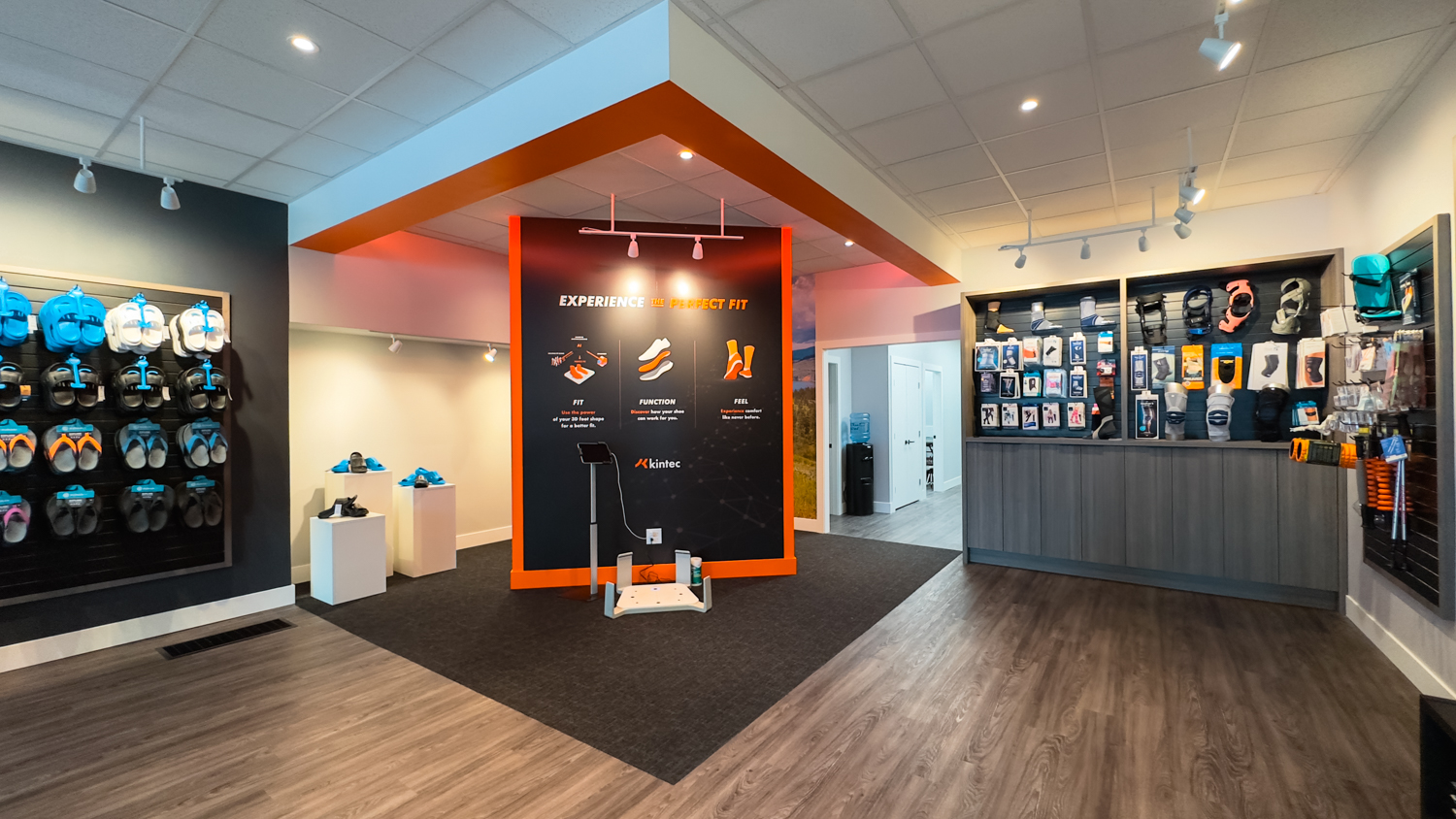
Knee Braces
Hiking is hard on your knees no matter how physically fit you are, but if you’re already dealing with a knee injury or arthritis, downhill can be especially difficult and painful.
Knee braces can be a great option for preventing knee pain on the trail because they support your kneecaps and add stability. Before you run out and buy a knee brace, consider consulting with a professional (such as Kintec) to find the best option for you.
Not all knee braces are meant for hiking so it’s important to find the right one that will help make hiking more comfortable on your knees.

Prepare Your Feet & Boots Before Hiking
Before you hit the trails, it’s important to prep your feet to prevent foot pain on the trail. These are quick and easy things you can do to keep your feet happy!
Trim Your Toenails
Always trim your toenails right before you go for a hike, especially if it’s a multi-hour or strenuous trail. Trim them close and straight across.
This helps prevent ingrown nails and “hiker’s toenail” which is basically a bruise that can make your toenail turn black or, in extreme cases, fall off. When you’re hiking, your toenails press against the front of your shoes and take a beating.
With untrimmed toenails or improperly fitted shoes, the more likely it is that you’ll experience these very unpleasant, but totally avoidable, hiking injuries.
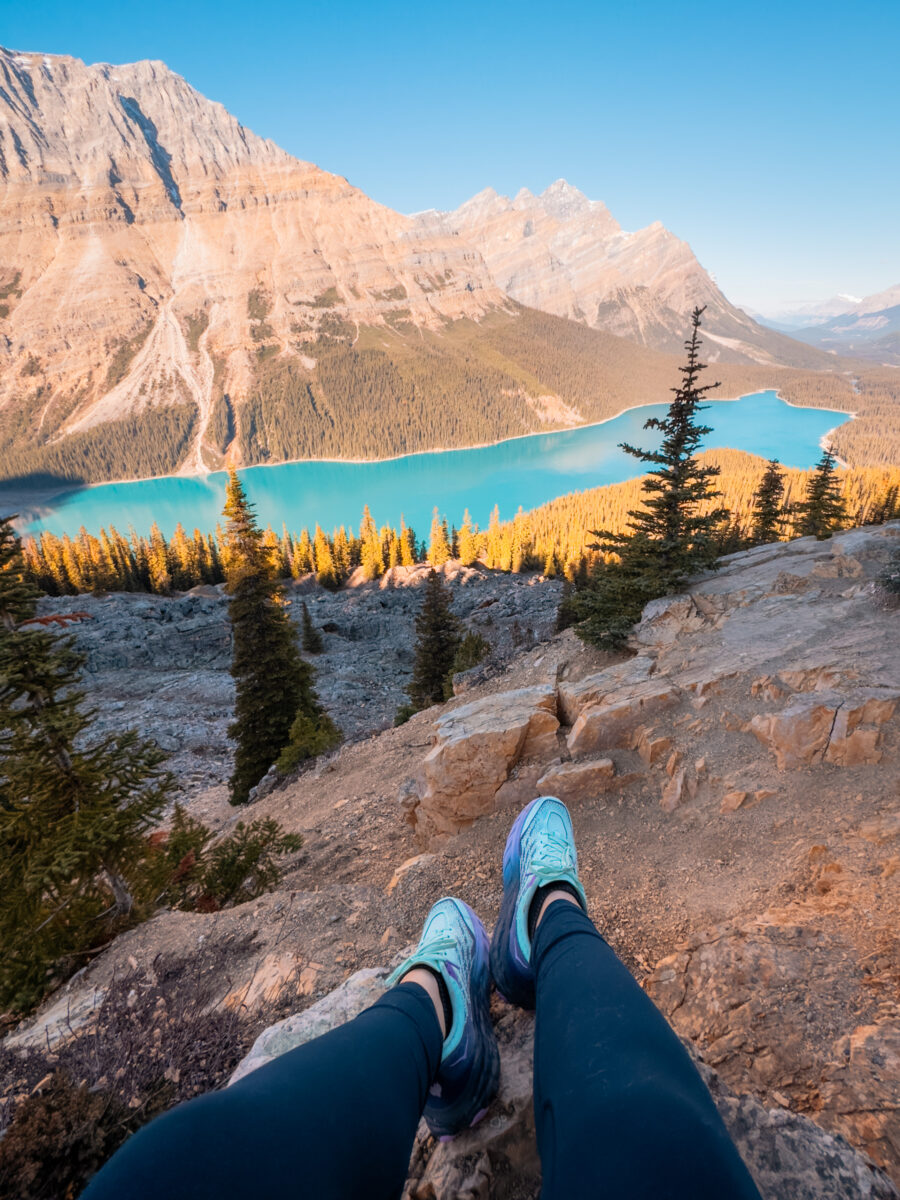
Lace Your Shoes Properly
There are many ways to lace your hiking shoes and yes, it does make a difference. With improperly laced boots, your feet are more likely to slip around inside your shoe which eventually causes pain and discomfort.
Unfortunately, there’s no one right way to tie your boots since it largely depends on your specific needs with specific shoes. You’ll likely need to try a few lacing techniques to find what works best for you.
Test Your Socks
Your socks will make a huge difference in preventing foot pain while hiking. In fact, they’re almost as important as proper shoes.
Choose socks that are moisture wicking (preferably wool) and provide an appropriate amount of cushioning.
Bring Extra Socks
Always bring extra socks on your hikes — ideally moisture wicking socks. This will help keep your feet dry which in turn will help prevent blisters.
When you’re on the trail, change your socks if they get wet or you’re feeling extra sweaty. Always air out your feet and socks when you take extended breaks and pin your wet socks to your backpack so they can dry out. This will go a long way to preventing painful blisters and hot spots while hiking.
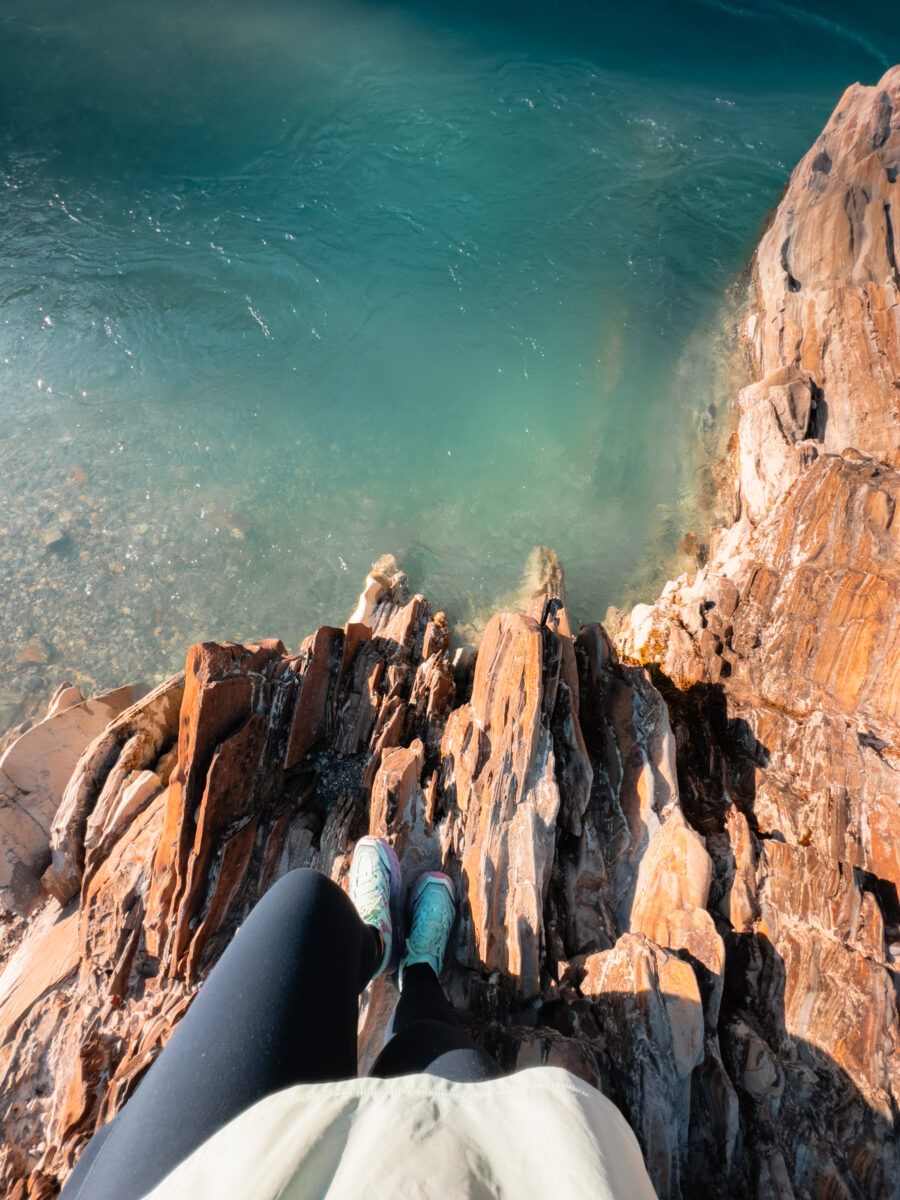
Pre-Tape Your Feet
If you’re prone to blisters or hot spots on specific areas of your feet, tape them before you leave. The tape will act as a friction barrier and help reduce pain while hiking.
I use Leukotape for pre-taping because it stays on extremely well and doesn’t hurt to remove. I’ve been taping my feet for years and find it makes a big difference in how many blisters I get.
If you’re getting a lot of blisters, it might be time to visit a Canadian Certified Pedorthist to figure out what’s happening. It could be a case of improperly fitted shoes that’s causing too much rubbing.

Lighten Your Backpack
Consider how much weight you’re carrying in your backpack. Day hikes won’t often be an issue, but the extra weight from long backpacking trips puts a lot of extra stress and pressure on your feet.
Take time to look through your gear and reduce weight where possible. You don’t have to buy the most lightweight gear on the market, but reducing weight will help reduce foot pain when you’re hiking.
Address Any Pain Beforehand
If you’re feeling any kind of pain, don’t ignore it because it’s almost guaranteed to get worse the longer you hike.
Whether it’s stretching, exercising, dietary changes, or a visit to the doctor, try to get your aches and pains figured out before you head out for a big hike. Of course, not all pain can be cured that easily, but it’s worth looking into if you haven’t before.
If you’re having a lot of foot pain, visit a Canadian Certified Pedorthist such as Kintec to figure out what’s happening and get it corrected.

Stretch Properly
Before you head out on a hike, it’s important to warm up your muscles and get your body ready for the demands you’re about to ask of it.
Stretching properly will reduce your chances of joint and muscles pain in your entire body, as well as increase your flexibility. You can also focus specifically on stretching and strengthening your foot muscles to reduce pain.
Some good stretches and exercises include:
- Ball squeeze heel raises
- Lower calf stretch
- Shoulder rolls
- Inner thigh stretch
- Ankle inversion
- Standing quad stretch
- Hamstring stretch
- Forward step-down
FAQ
Orthotics are prescribed by doctors after they complete a thorough examination of your feet, posture, and gait (how you walk). Orthotics are made specifically for you whereas insoles are made for everyone. It’s like having tailored clothing vs buying off the shelf.
Yes! Kintec orthotics are inserts which can be easily put into your hiking boots. Adding custom orthotics to your hiking boots helps support your feet which will reduce pressure and stress from hiking.
The type of footwear you choose for hiking greatly depends on your individual needs and the trail you’ll be on. Consider consulting with a professional at Kintec to determine what type of support your feet need.
A properly fitted shoe takes many things into consideration, including length, width, and volume. Visit a Kintec store for a free 3D foot scan to find out exactly what size your foot is and what shoes will fit best.
Arch support with custom orthotics can help with foot pain while hiking. It helps distribute weight on your foot, stabilize your ankles, and acts as shock absorption.